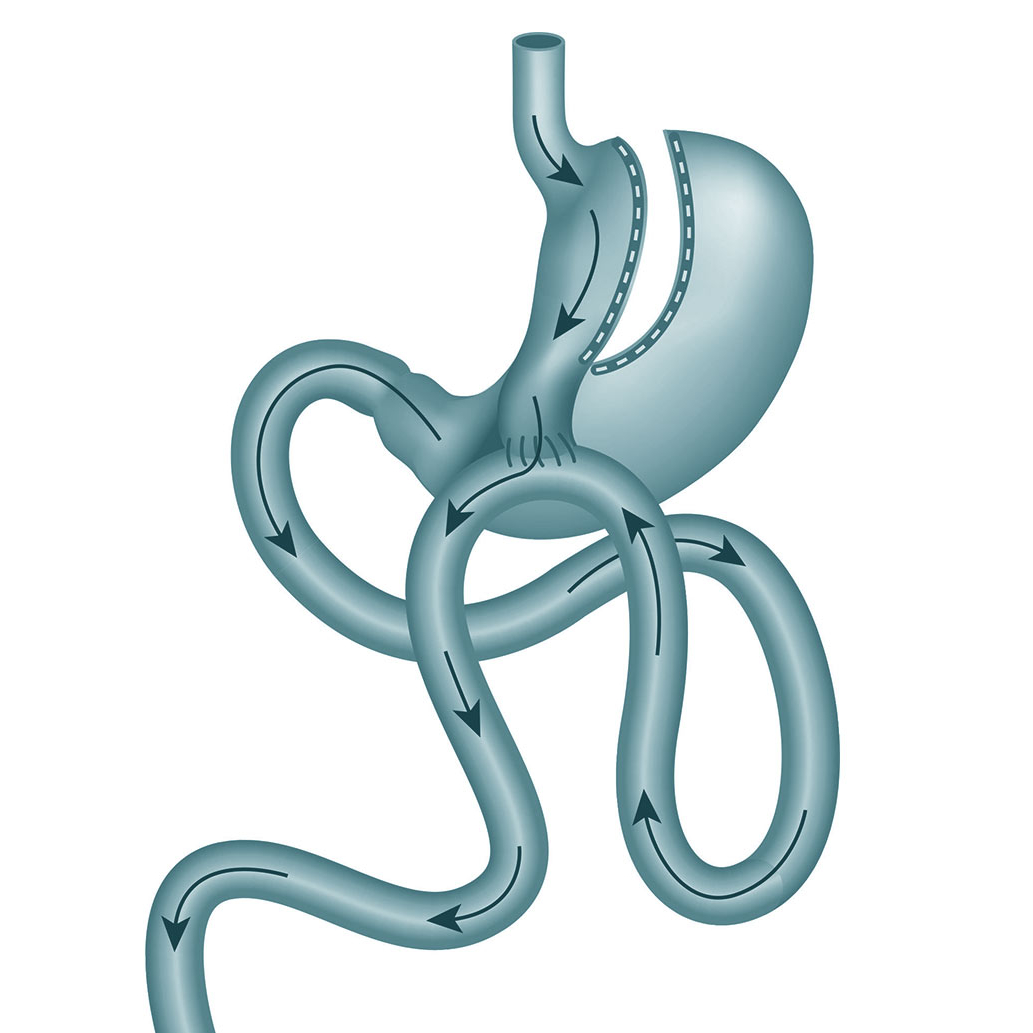One anastomosis gastric bypass
The one anastomosis gastric bypass (OAGB), also known as the mini gastric bypass or omega loop bypass, is a modern and increasingly popular option for people seeking significant and sustainable weight loss. It offers excellent outcomes for many patients – especially those with higher BMI ranges – and is performed using a minimally invasive (laparoscopic) technique.
This procedure combines both restriction (reducing stomach size) and malabsorption (bypassing part of the intestine), which together support effective weight loss and metabolic improvement.
How the procedure works
During surgery, the stomach is reshaped into a narrow tube or pouch. This small pouch is then connected directly to a loop of the small intestine, bypassing roughly 1.5 to 2 metres of bowel. This limits both food intake and nutrient absorption, helping reduce hunger and improve blood sugar control.
Unlike traditional bypass surgery, OAGB involves only one intestinal connection (or “anastomosis”), which simplifies the procedure and may reduce complication rates.
Why choose OAGB?

Key advantages:
- Often achieves equal or greater weight loss compared to Roux-en-Y gastric bypass
- Involves fewer surgical connections, which may reduce complication risks
- Can help break unhealthy eating patterns through a natural “dumping” response to high-sugar or high-fat foods
- Supports remission or improvement of Type 2 diabetes – often within days of surgery
- Allows a return to eating nutritious, balanced meals long-term
Considerations:
- Like all bariatric procedures, lifelong vitamin and mineral supplements are required
- A small number of people may experience diarrhoea or changes in bowel habits after surgery
- Not all patients are suited to this procedure – suitability depends on your medical history and goals
Is OAGB right for me?
This option may be recommended for people with a higher starting BMI (typically over 50) or those seeking a procedure with strong metabolic benefits. It is especially effective in cases where weight loss has been difficult to maintain through other methods.
Your surgeon will help assess whether OAGB is the most appropriate option based on your medical background, preferences, and goals.
What to expect after surgery
- Most patients spend one to two nights in hospital
- Recovery is typically faster than with open surgery, thanks to laparoscopic techniques
- A gradual return to solid food takes place over several weeks
- You’ll receive structured follow-up and support from our multidisciplinary team, including dietitians and nurses
Begin your wellness journey today
You don’t have to have it all figured out. Whether you’re just starting to research or ready to move forward, we’re here to help you make an informed decision that works for your life.
Your Body Mass Index (BMI) helps assess whether you might benefit from surgery.
We’ll send you an easy-to-read guide that outlines options, eligibility, and what to expect.
A referral by your GP is required. Talk with our team to understand what might be right for you.

